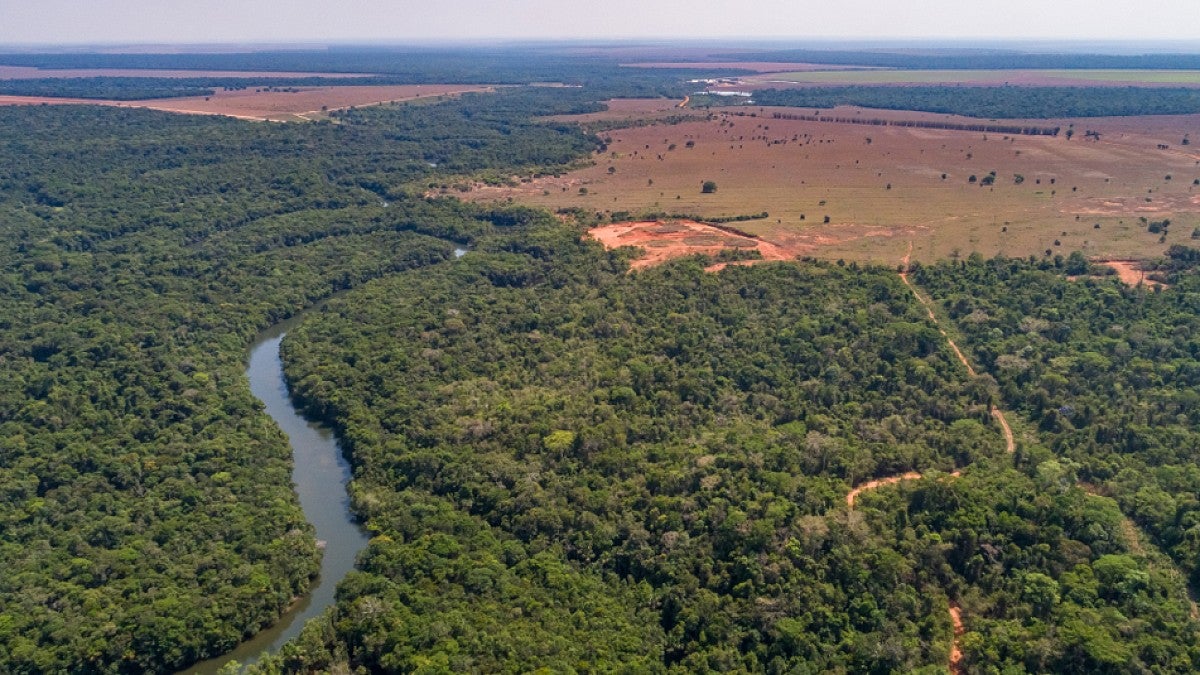Phosphorous, calcium and charcoal suggest that indigenous people learned to identify uniquely fertile soils prior to the invention of agriculture in the Amazon region, according to a University of Oregon-led team of scientists.
Researchers have long theorized that pre-Columbian artifacts, signs of plant domestication and charcoal remains from controlled burns had produced rare spots of fertility in the notoriously highly acidic and nutrient-poor Amazon soil environment.
However, radiocarbon dating of such fertile soil, known as Amazonian dark earth, at an often-studied basin near the confluence of the Solimoes and Negro rivers in northwest Brazil tell a different story, said Lucas Silva, a professor of environmental studies, who led the project.
Silva’s 14-member research team published their findings Jan. 4 in the journal Nature Communications. They propose that natural processes, not the practices of indigenous people, created rare fertile patches of land commonly referred to as Amazonian dark earths.
The study site is home to the Brazilian Agricultural Research Corp., where Silva has been visiting since 2009. For the new research, Silva was accompanied by four UO colleagues and local collaborators. They concluded that natural wildfires and river flooding delivered spots of fertility some 1,000 years before indigenous populations arrived and began transitioning from nomadic to sedentary settlements.
“We analyzed carbon and nutrient pools in light of the local anthropological context to estimate the chronology of management and the population density needed to attain the observed gain in Amazonian dark earth fertility compared to the surrounding landscape,” Silva said.
“Our results show that large sedentary populations would have had to manage soils thousands of years prior to the emergence of agriculture in the region or, more likely, that indigenous peoples used their knowledge to identify and preferentially settle areas of exceptionally high fertility before the onset of soil management and plant cultivation in central Amazonia,” he said.
Phosphorous and calcium levels at the site were orders of magnitude higher than in surrounding soil. A correlation with 16 trace elements, Silva noted, indicate that fertility did not form in place. Additionally, he said, isotopic ratios of neodymium and strontium suggest that presettlement river flooding delivered nutrients and charcoal from upstream locations.
The soil and records of past monsoon intensity, the researchers said, indicate a climate-driven shift in river dynamics after a dry period about 8,000 years ago. That shift to flooding, they noted, would have reduced fire disturbance, increased regional tree coverage and “could have caused divergent patterns of carbon and nutrient accumulation in flooded versus nonflooded areas,” consistent with the minerals in the dark earth at the research site.
“Our findings underscore the need for a broader view of landscape evolution as a path towards understanding the formation of Amazonian dark earths and redirecting applications for sustainable land use and conservation,” Silva said. “If corroborated elsewhere, our hypothesis would transform our understanding of human influence in Amazonia, opening new frontiers for the sustainable use of tropical landscapes going forward.”
UO co-authors on the study were doctoral student Jamie L. Wright, Silva’s former postdoctoral researcher Barbara Bomfim, who is now at the Lawrence Berkeley National Laboratory, geography professor Daniel Gavin and Gavin’s doctoral student Lauren Hendricks.
The team also included researchers from the University of Brasilia, University of Parano in Brazil, Brazilian Agricultural Research Corp. in Embrapa, Federal Institute of Southeast Minas Gerais in Brazil and University of Nottingham in the United Kingdom.
The National Science Foundation and a seed grant from the University of Oregon’s Office of Research and Innovation supported the work by Silva’s group in the study.
—By Jim Barlow, University Communications


